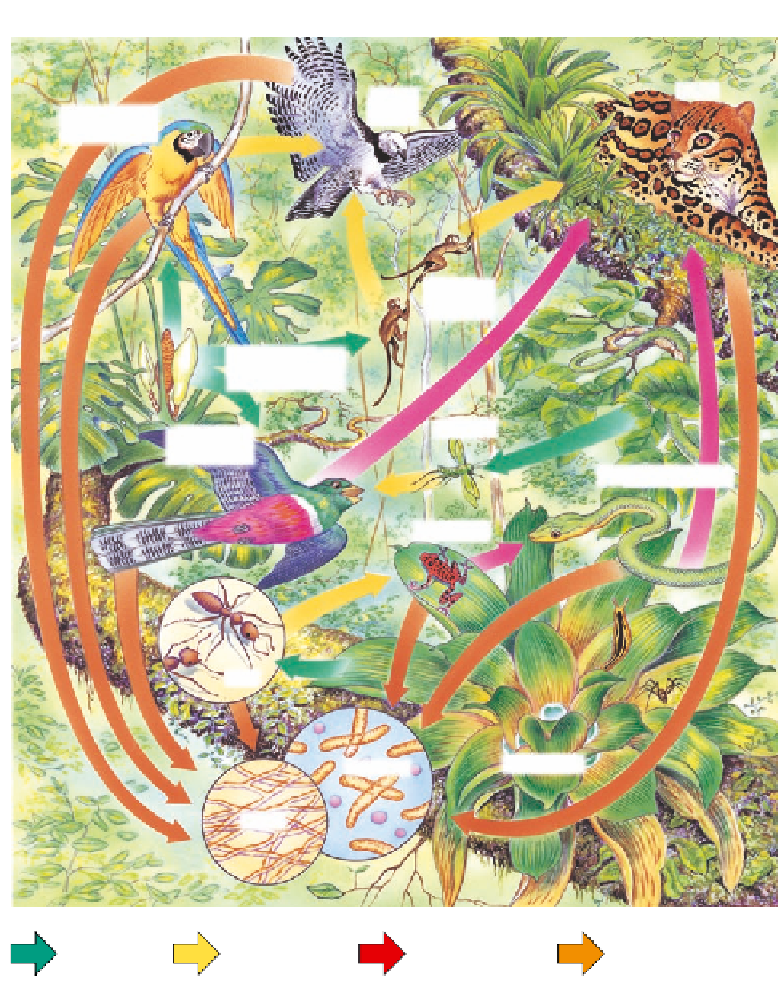Environmental Engineering Reference
In-Depth Information
Tropical rain forests are dominated by
broadleaf
evergreen plants,
which keep most of their leaves year-
round. The tops of the trees form a dense canopy that
blocks most light from reaching the forest floor. Many
of the plants that live at the ground level have enor-
mous leaves to capture what little sunlight filters
through to the dimly lit forest floor.
Tropical rain forests are teeming with life and boast
incredible biological diversity. These life forms occupy
a variety of specialized niches in distinct layers—in the
plants' case, based mostly on their need for sunlight, as
shown in Figure 5-17. Stratification of specialized plant
and animal niches in a tropical rain forest enables the
coexistence of a great variety of species. Although tropi-
cal rain forests cover only 2% of the earth's land surface,
at least half of the earth's terrestrial species reside there.
Dropped leaves, fallen trees, and dead animals de-
compose quickly because of the warm, moist condi-
tions and hordes of decomposers. This rapid recycling
of scarce soil nutrients explains why little litter is
found on the ground. Instead of being stored in the
soil, most minerals released by decomposition are
taken up quickly by plants and stored by trees, vines,
and other plants. As a result, tropical rain forest soils
contain very few plant nutrients (Figure 3-22, bottom
left, p. 52). Rain forests are not good places to clear and
grow crops or graze cattle on a sustainable basis.
Learn more about how plants and animals in a rain
forest are connected across a food web at Environmental
ScienceNow.
Ocelot
Ocelot
Harpy
eagle
Harpy
eagle
Blue and
gold macaw
Blue and
gold macaw
Squirrel
monkeys
Squirrel
monkeys
Climbing
monstera palm
Climbing
monstera palm
Katydid
Katydid
Slaty-tailed
trogon
Slaty-tailed
trogon
Green tree snake
Green tree snake
Tree frog
Tree frog
Ants
Ants
Active Figure 5-16
Natural capital:
some components and interactions
in a
tropical rain forest ecosystem.
When these organisms die, decom-
posers break down their organic
matter into minerals that plants use.
Colored arrows indicate transfers
of matter and energy between pro-
ducers; primary consumers (herbi-
vores); secondary, or higher-level,
consumers (carnivores); and decom-
posers. Organisms are not drawn to
scale.
See an animation based on
this figure and take a short quiz on
the concept.
Bromeliad
Bromeliad
Bacteria
Bacteria
Fungi
Fungi
Primary
to secondary
consumer
All producers and
consumers to
decomposers
Producer
to primary
consumer
Secondary to
higher-level
consumer


















